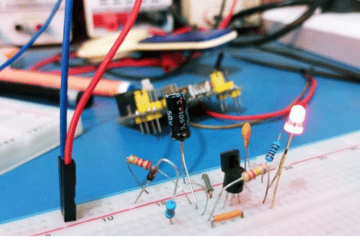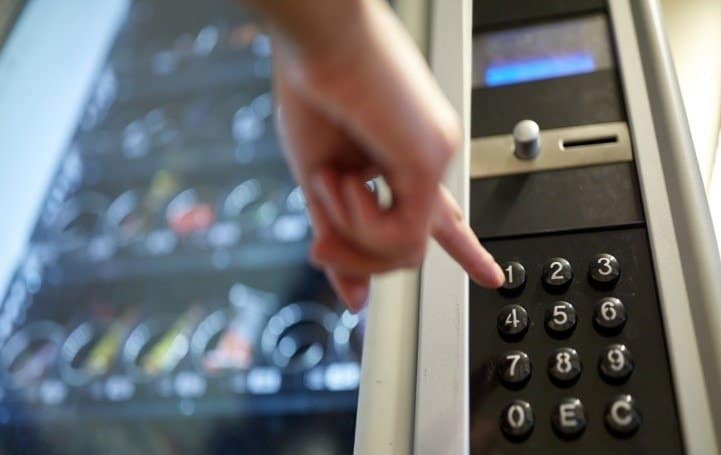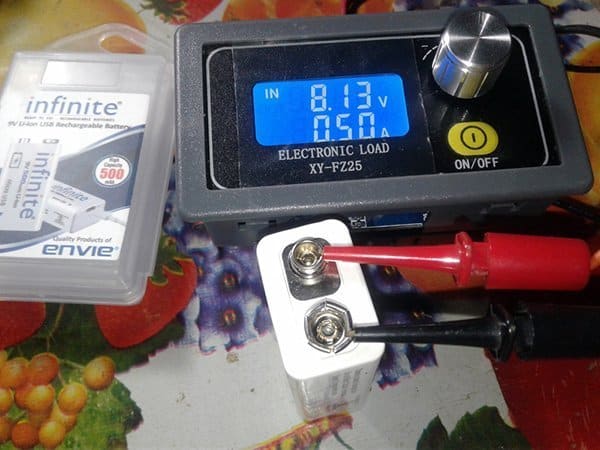I have been experimenting with wireless charging for a few years now, including building some fun projects with readymade Qi wireless chargers and wireless charging modules!
I think you also know that it is pretty easy to make cool add-ons for kids toys with leftover Qi wireless chargers and accessories. Anyway, let us try to understand the secrets of Qi wireless charging a little deeper through this post. Well, let us get started.
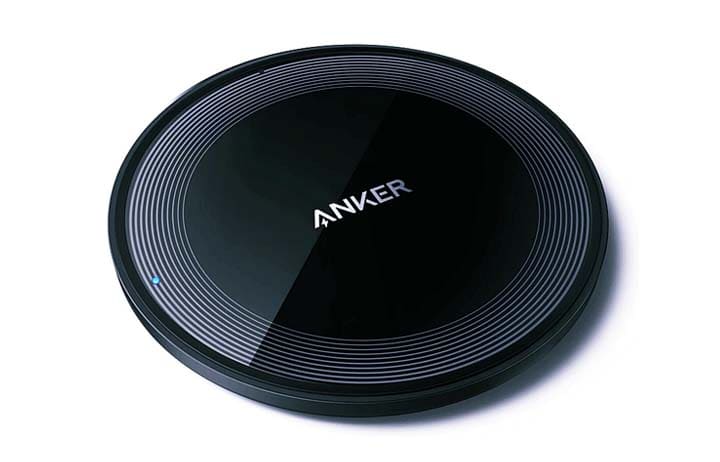
Qi, pronounced as chee, is a Chinese word that simply means energy flow. It is one of the most popular wireless charging standards for smartphones, headsets, and wearable gadgets.
Qi charging works on the principle of electromagnetic induction. Simply put, the wireless charging pad and the smartphone consist of copper wire coils. The charging pad has a large coil, while the phone has a smaller one.
When current gets into the wireless charging pad, its large coil (transmitter coil) generates a magnetic field. So, when the phone is placed on the wireless charging pad, the coil inside the phone (receiver coil) converts that magnetic field into an electric current.
The current thus generated is transferred to the smartphone’s battery and the amount of current flow, voltage level, battery temperature, and charge level are all invariably monitored electronically to ensure optimum performance and overall safety.
Note at this point that wireless charging (inductive charging) is a technology, while Qi is a wireless charging standard that defines how power is delivered wirelessly.
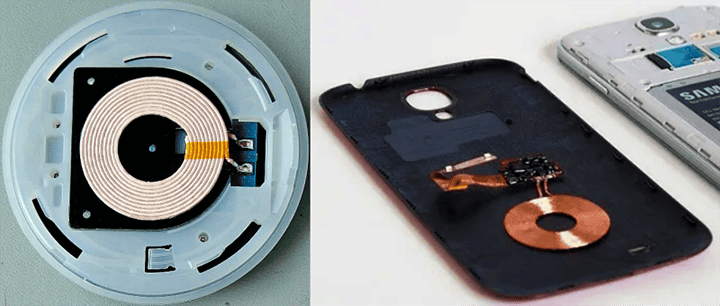
Getting a bit deeper into the rabbit hole, it was noticed that a Qi wireless charging pad/dock beams brief pulses few times a second when nothing to charge (and a somewhat continuous pulsated signal when something to charge).
That is, the transmitter (charging pad) periodically sends short ping energy signals on air and if the receiver (phone) responds with proper ping response packet according to the Qi packet structure, it starts the receiver identification process followed by continuous power transmission. Then, the receiver sends back periodically how much power is received and the error correction packet, and that feedback tells the transmitter to manage (increase or decrease) the energy transmitted.
Frankly, it is recommended to search for more specific details on this composite subject, rather than limiting yourself to my purposely simplified explanation.
Note: You can go through this official link to get the Qi Specifications (V1.3)
Thus, basically what happens is that a Qi wireless charging setup (transmitter and receiver) works in concert rather than just pumping current into nearby coils. Also, if no response is received from a receiver, the transmitter will continue to ping as previously stated.
The question is: Can I just use a Qi wireless charging pad (whichever brand it is) for some funny wireless power projects?
The answer is: Yes, that ping function itself will help you do that. Let us get into it now!
To exemplify the point further, I will now tell you about a quick experiment I did recently.
Originally the experiment was to easily make wire-free lamps for some toys.
First, I randomly picked a cheap Qi wireless charging pad from what I had.
Next, I took a small drum-core inductor (~10mH/18Ω) to act as the receiver coil.
Then I made sure that the receiver coil current was pulsing interminably – meaning it would be present for a time, then absent for a time (see a random oscillogram below).
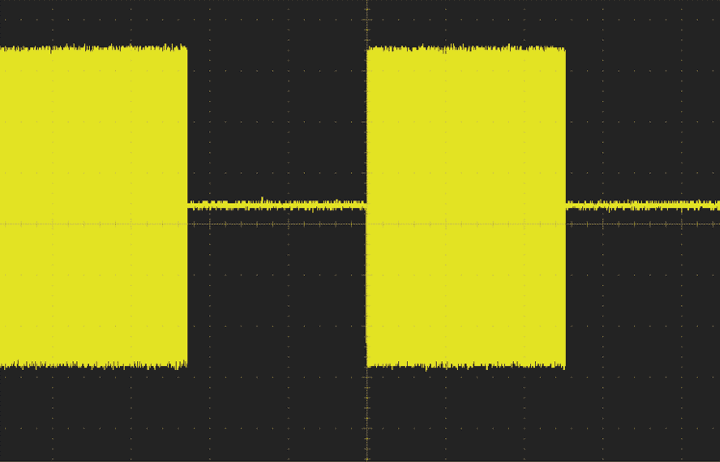
Last, I wired two LEDs to the inductor as shown in the drawing below.
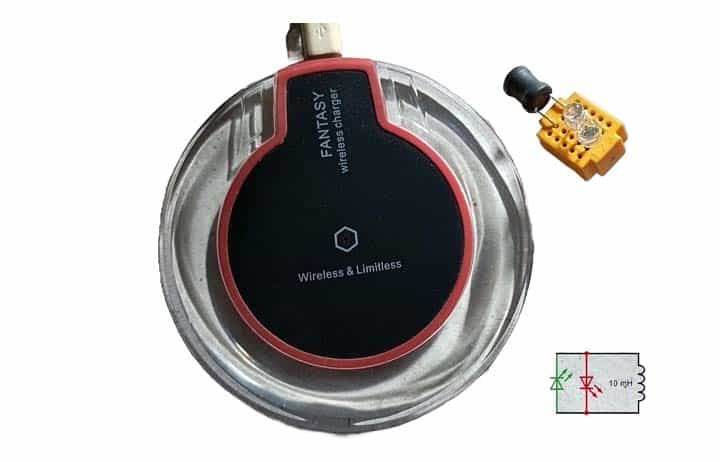
And voila: I was able to get a couple of flashing wireless LEDs!
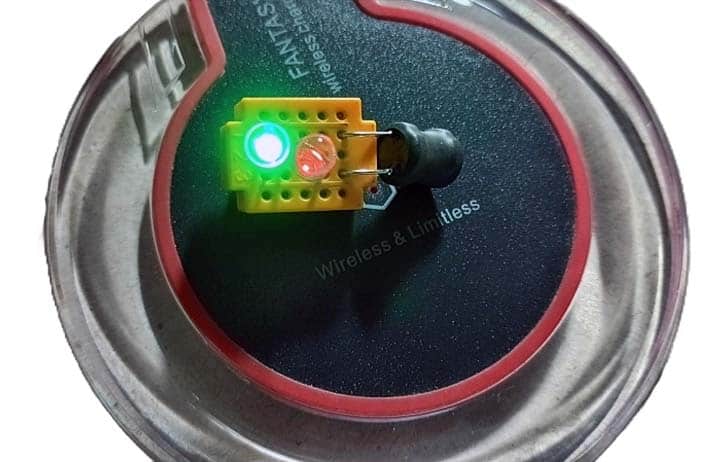
The final step was to put that LED setup in a translucent toy. I did it easily (no photos to show at this moment, sorry).
Best of all, I got about 5cm of ‘service distance’ between the Qi wireless charging pad and the inductor located inside (fixed underneath) the modified toy with wireless power LEDs.
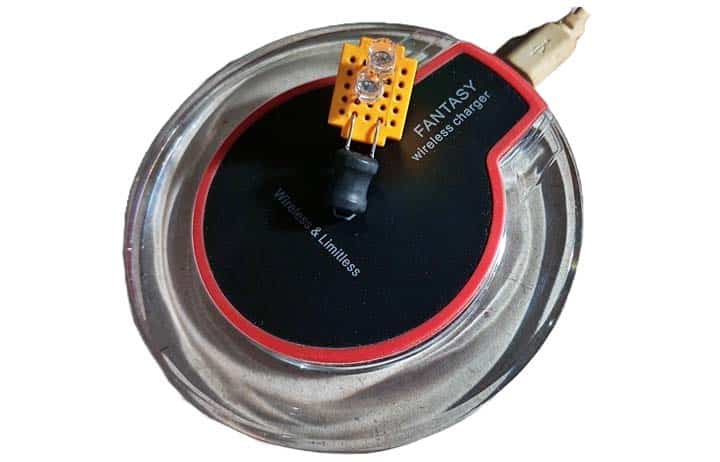
As an interim conclusion, this little concept works well enough for demonstration purposes and for certain toy lighting applications. There is still some room for improvement though. A more efficient wireless receiver, in case the output load is going to be anything more demanding than a few discrete LEDs, would be much better. Let us do it later!

